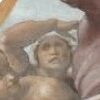7 Best-Selling Aesthetics Books Millions Love
Explore expert picks from Jason Fried, Jay Duplass, and Wrath Of Gnon, highlighting best-selling Aesthetics books that blend philosophy, culture, and design



When millions of readers and top experts agree, a book’s impact on understanding aesthetics becomes clear. Aesthetics remains a vital subject as it shapes how we perceive beauty, culture, and design in an increasingly visual world. These seven best-selling books capture enduring ideas and fresh perspectives, proving their lasting value.
Jason Fried, co-founder of Basecamp and author focused on business and design, highlights In Praise of Shadows for its exploration of subtle beauty and cultural identity. Actor and filmmaker Jay Duplass credits Ways of Seeing with reshaping his view on visual storytelling and cultural power. Traditionalist commentator Wrath Of Gnon praises the cultural depth of Tanizaki’s work, emphasizing heritage and atmosphere.
While these popular books provide proven frameworks, readers seeking content tailored to their specific Aesthetics needs might consider creating a personalized Aesthetics book that combines these validated approaches for a custom learning experience.
Recommended by Wrath Of Gnon
Traditionalist and urbanism commentator
“Maybe my second favorite book?” (from X)
by Jun'ichiro Tanizaki··You?
by Jun'ichiro Tanizaki··You?
What makes this book linger in your mind is how Jun'ichiro Tanizaki explores the subtle beauty of shadows in traditional Japanese interiors, contrasting them with the harsh brightness of modernity. Tanizaki, a towering figure in Japanese literature, moves beyond mere aesthetics to reveal how light and darkness shape cultural identity, architecture, and everyday objects like lacquerware and food presentation. You’ll find yourself learning to appreciate the nuanced interplay of shadow and form, especially in chapters describing candlelit rooms and intimate spaces. This book suits anyone intrigued by cultural aesthetics, architectural atmosphere, or the philosophy behind visual perception, though it might feel too poetic for readers seeking straightforward design manuals.
by Monroe C. Beardsley·You?
by Monroe C. Beardsley·You?
Monroe C. Beardsley, a distinguished philosopher known for his work in aesthetics, developed this book to bridge classical ideas with contemporary philosophical insights. You’ll explore how principles from present-day philosophy reshape the understanding of aesthetics throughout history, from ancient Greece onward. The book challenges traditional narratives by integrating recent scholarly debates and conceptual advances, making it particularly insightful if you want to grasp how aesthetic theory evolved and why it matters today. Chapters delve into key philosophers and movements, offering you a framework to critically assess aesthetic values and judgments. This is ideal for anyone engaged in philosophy, art criticism, or cultural studies looking to deepen their intellectual toolkit.
by TailoredRead AI·
This tailored book explores proven aesthetics methods refined through the perspectives of millions of readers, customized to match your unique interests and background. It examines enduring principles of beauty, design, and cultural expression while integrating practical insights that resonate with your specific goals. By focusing on your personal aesthetic challenges and preferences, this personalized guide reveals how timeless concepts intersect with contemporary applications, enriching your understanding and appreciation of aesthetics in everyday life. The content carefully balances historical depth with real-world relevance, inviting you into a thoughtful journey through art, culture, and design that speaks directly to your curiosities and aspirations.
by Roger Scruton·You?
by Roger Scruton·You?
Roger Scruton challenges the common separation between architecture and aesthetics by exploring how buildings communicate meaning and beauty beyond mere function. Drawing on his background as a philosopher deeply invested in cultural conservatism, Scruton examines how architectural forms embody values and shape human experience, inviting you to reconsider the visual and emotional impact of the built environment. While the book’s forthcoming description limits explicit details, its reputation suggests readers will gain insights into the philosophical foundations of architectural beauty and the role of tradition in design. This book is best suited for those interested in the intersection of philosophy and architecture, especially if you want to deepen your understanding of how aesthetics influence our daily environments.
by Benedetto Croce··You?
by Benedetto Croce··You?
Benedetto Croce challenges the usual notion that aesthetics is merely about subjective taste by framing it as a science of expression rooted in language. Exploring how art communicates universal emotions and ideas, Croce draws from literature, music, and visual arts to illustrate this intricate relationship. You’ll find detailed discussions on the connection between artistic expression and linguistic structures, shedding light on how art transcends personal preference to become a shared human language. If you're interested in philosophy, linguistics, or the theory behind artistic communication, this book offers deep insights that will expand your understanding of aesthetics beyond surface beauty.
by Harold Osborne·You?
by Harold Osborne·You?
Unlike most aesthetics books that focus narrowly on art criticism, Harold Osborne's collection explores diverse philosophical perspectives on the nature of beauty and artistic experience. You gain insight into foundational debates through a curated set of essays that challenge conventional views, such as the relationship between aesthetic value and emotional response. The book suits philosophy students and anyone interested in deepening their understanding of aesthetic theory through classic and modern readings. For example, chapters dissect concepts like the definition of art and the role of interpretation, inviting you to question your assumptions about what makes art meaningful.
by TailoredRead AI·
This tailored book explores practical applications of visual aesthetics through a personalized lens that matches your interests and background. It examines core principles of design, color theory, composition, and visual storytelling, focusing on how you can enhance your understanding and skills efficiently. By combining widely appreciated aesthetic concepts with insights that align specifically with your goals, it reveals a pathway to deepen your visual insight rapidly. This personalized approach helps you focus on aspects that matter most to you, making your learning experience engaging and directly relevant. Whether you're a beginner or building on prior knowledge, this book offers a tailored journey through the essentials of visual aesthetics.
Recommended by Jay Duplass
Actor and filmmaker
“THE LOST LEONARDO doc is great Reminds me of the most influential book I read in College, John Berger's WAYS OF SEEING” (from X)
by John Berger··You?
by John Berger··You?
John Berger, a novelist and art critic with a Booker Prize under his belt, wrote this book to challenge how we perceive art in everyday life. You’ll explore the way images influence your understanding, especially how context shifts meaning — think of the famous analysis of nude paintings and advertising side by side. Chapters dissect the male gaze and how traditional art often reflects power dynamics, inviting you to reconsider what you take for granted when looking at art. This book suits anyone curious about visual culture, from students to casual observers seeking to sharpen their media literacy.
by Georg Wilhelm Friedr Hegel, Michael Inwood, Bernard Bosanquet··You?
by Georg Wilhelm Friedr Hegel, Michael Inwood, Bernard Bosanquet··You?
Hegel's decades of philosophical experience led to these Introductory Lectures on Aesthetics, where he wrestles with art's role amid modernity's challenges. He examines why the classical ideal of perfect unity between form and content seems out of reach in a world transformed by Christianity and irony, offering a rigorous critique of art's evolving significance. You’ll gain insight into how historical context shapes aesthetic theory and why art's capacity to convey truth becomes complicated in contemporary society. This book suits anyone curious about philosophy’s intersection with art, especially those interested in how cultural shifts influence artistic expression and critique.
Popular Aesthetics Strategies, Personalized ✨
Access proven aesthetics insights tailored to your unique interests and goals.
Trusted by thousands of aesthetics enthusiasts worldwide
Conclusion
These seven best-selling books reveal three clear themes: the intersection of philosophy and aesthetics, the cultural and historical dimensions shaping beauty, and the practical influence of aesthetics on design and media. If you prefer proven methods grounded in philosophical tradition, Aesthetics from Classical Greece to the Present and Introductory Lectures on Aesthetics offer solid foundations. For validated approaches connecting culture and perception, combine In Praise of Shadows with Ways of Seeing.
Alternatively, you can create a personalized Aesthetics book to combine proven methods with your unique needs. These widely-adopted approaches have helped many readers succeed in deepening their understanding and appreciation of aesthetics.
Frequently Asked Questions
I'm overwhelmed by choice – which book should I start with?
Start with In Praise of Shadows if you want a poetic cultural perspective or Aesthetics from Classical Greece to the Present for a thorough philosophical foundation. Both offer accessible entry points depending on your interests.
Are these books too advanced for someone new to Aesthetics?
Not at all. While some books like Introductory Lectures on Aesthetics delve deeply into philosophy, others like Ways of Seeing present concepts in engaging, accessible ways suitable for beginners.
What's the best order to read these books?
Begin with Ways of Seeing to sharpen visual awareness, then explore In Praise of Shadows for cultural context, followed by philosophical texts like Aesthetics from Classical Greece to the Present and Introductory Lectures on Aesthetics.
Should I start with the newest book or a classic?
Classics like Ways of Seeing and In Praise of Shadows remain highly relevant, offering timeless insights. Pairing classics with contemporary analysis enriches your understanding of aesthetics.
Do I really need to read all of these, or can I just pick one?
You can pick one that matches your interest—whether cultural, philosophical, or architectural aesthetics. Each book stands alone but together they provide a richer, multi-dimensional view.
How can I get Aesthetics insights tailored to my specific interests and skill level?
These expert books offer foundational knowledge, but personalized content can complement them by focusing on your unique goals and background. Consider creating a tailored Aesthetics book to combine proven strategies with your specific needs.
📚 Love this book list?
Help fellow book lovers discover great books, share this curated list with others!
Related Articles You May Like
Explore more curated book recommendations






